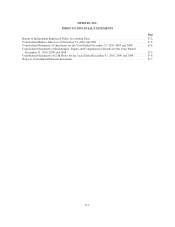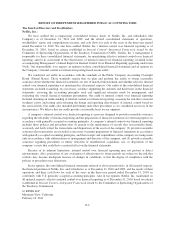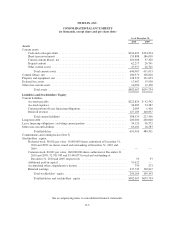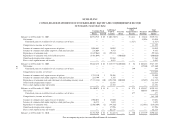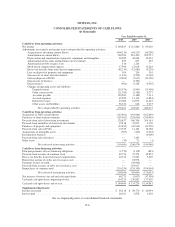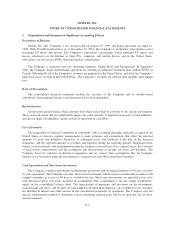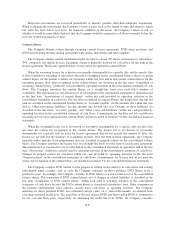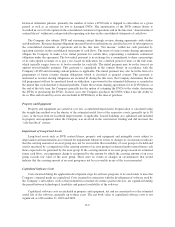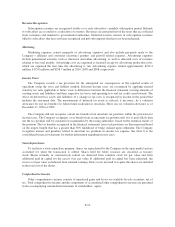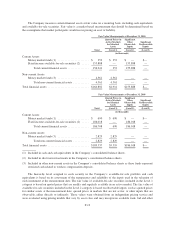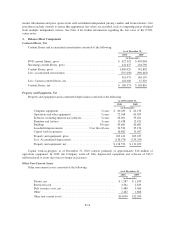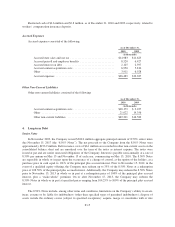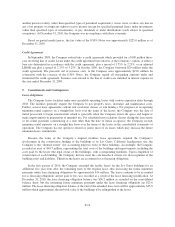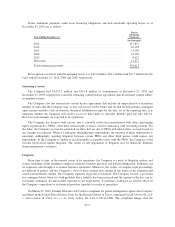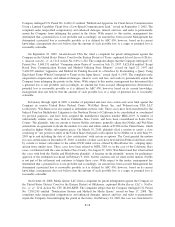NetFlix 2010 Annual Report Download - page 53
Download and view the complete annual report
Please find page 53 of the 2010 NetFlix annual report below. You can navigate through the pages in the report by either clicking on the pages listed below, or by using the keyword search tool below to find specific information within the annual report.historical utilization patterns, primarily the number of times a DVD title is shipped to subscribers in a given
period, as well as an estimate for lost or damaged DVDs. The amortization of the DVD content library is
classified in cost of subscription in the consolidated statement of operations and in the line item “Amortization of
content library” within net cash provided by operating activities in the consolidated statements of cash flows.
The Company also obtains DVD and streaming content through revenue sharing agreements with studios
and distributors. Revenue sharing obligations incurred based on utilization are classified in cost of subscription in
the consolidated statements of operations and in the line item “Net income” within net cash provided by
operating activities in the consolidated statements of cash flows. The terms of some revenue sharing agreements
obligate the Company to make a low initial payment for certain titles, representing a minimum contractual
obligation under the agreement. The low initial payment is in exchange for a commitment to share a percentage
of its subscription revenues or to pay a fee, based on utilization, for a defined period of time, or the title term,
which typically ranges from six to twelve months for each title. The initial payment may be in the form of an
upfront non-refundable payment. This payment is capitalized in the content library in accordance with the
Company’s DVD and streaming content policies as applicable. The initial payment may also be in the form of a
prepayment of future revenue sharing obligations which is classified as prepaid content. This payment is
amortized as revenue sharing obligations are incurred. If during the title term, the Company determines that the
full prepayment will not be amortized based on utilization, a provision for the estimated difference is recorded in
the period that such shortfall is deemed probable. Under the revenue sharing agreements for its DVD library, at
the end of the title term, the Company generally has the option of returning the DVDs to the studio, destroying
the DVDs or purchasing the DVDs. In most cases, the Company purchases the DVDs when it has the ability to
do so. This end of term buy-out is also included in DVD library at the time of purchase.
Property and Equipment
Property and equipment are carried at cost less accumulated depreciation. Depreciation is calculated using
the straight-line method over the shorter of the estimated useful lives of the respective assets, generally up to 30
years, or the lease term for leasehold improvements, if applicable. Leased buildings are capitalized and included
in property and equipment when the Company was involved in the construction funding and did not meet the
“sale-leaseback” criteria.
Impairment of Long-Lived Assets
Long-lived assets such as DVD content library, property and equipment and intangible assets subject to
depreciation and amortization are reviewed for impairment whenever events or changes in circumstances indicate
that the carrying amount of an asset group may not be recoverable. Recoverability of asset groups to be held and
used is measured by a comparison of the carrying amount of an asset group to estimated undiscounted future cash
flows expected to be generated by the asset group. If the carrying amount of an asset group exceeds its estimated
future cash flows, an impairment charge is recognized by the amount by which the carrying amount of an asset
group exceeds fair value of the asset group. There were no events or changes in circumstances that would
indicate that the carrying amount of an asset group may not be recoverable in any of the years presented.
Capitalized Software Costs
Costs incurred during the application development stage for software programs to be used solely to meet the
Company’s internal needs are capitalized. Costs incurred in connection with the development of software used by
the Company’s subscribers, such as that included in consumer electronics partner devices, are capitalized during
the period between technological feasibility and general availability of the software.
Capitalized software costs are included in property and equipment, net and are amortized over the estimated
useful life of the software, generally up to three years. The net book value of capitalized software costs is not
significant as of December 31, 2010 and 2009.
F-9




